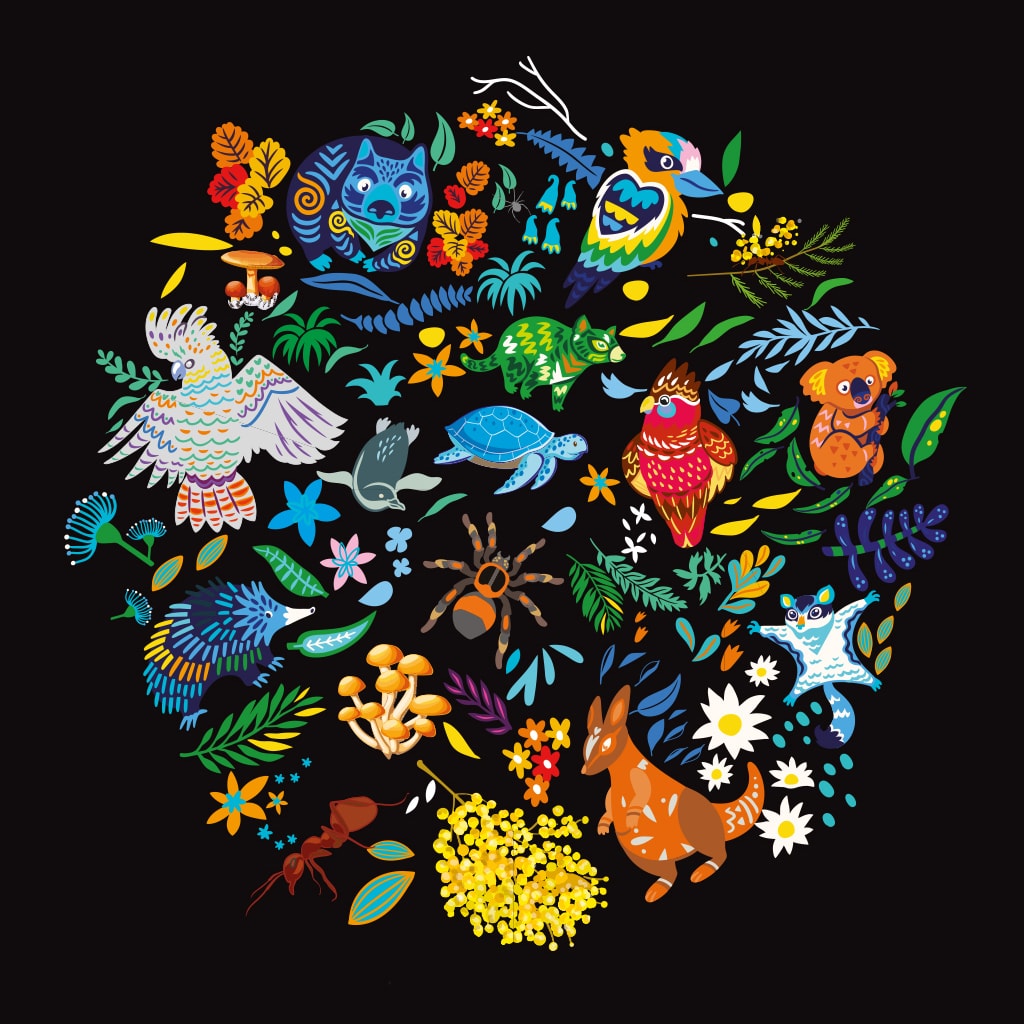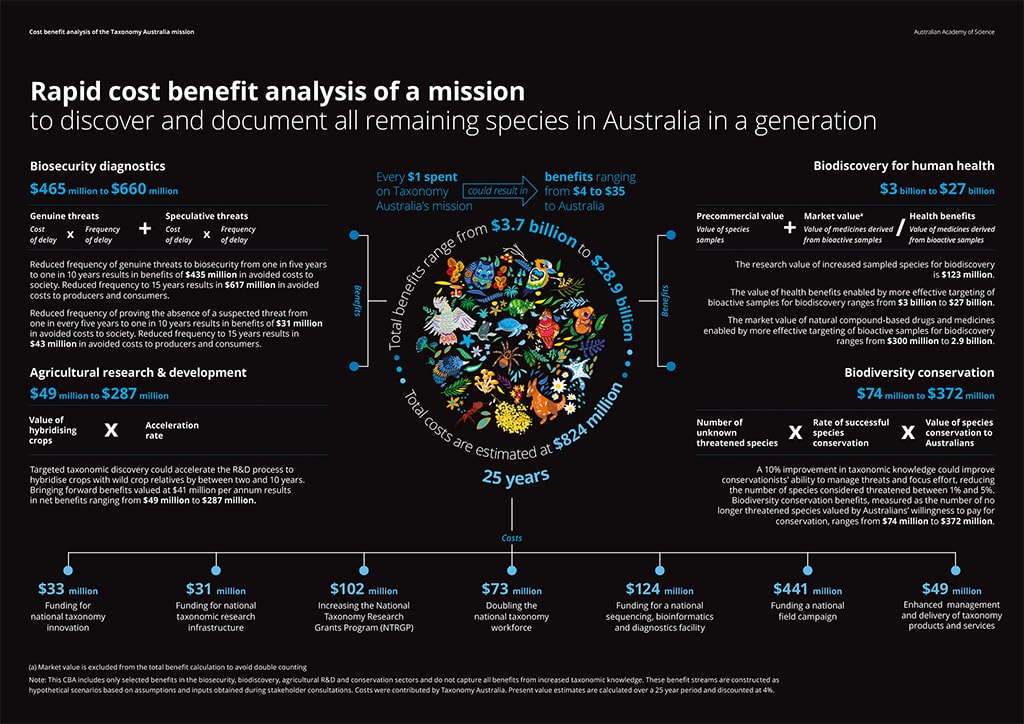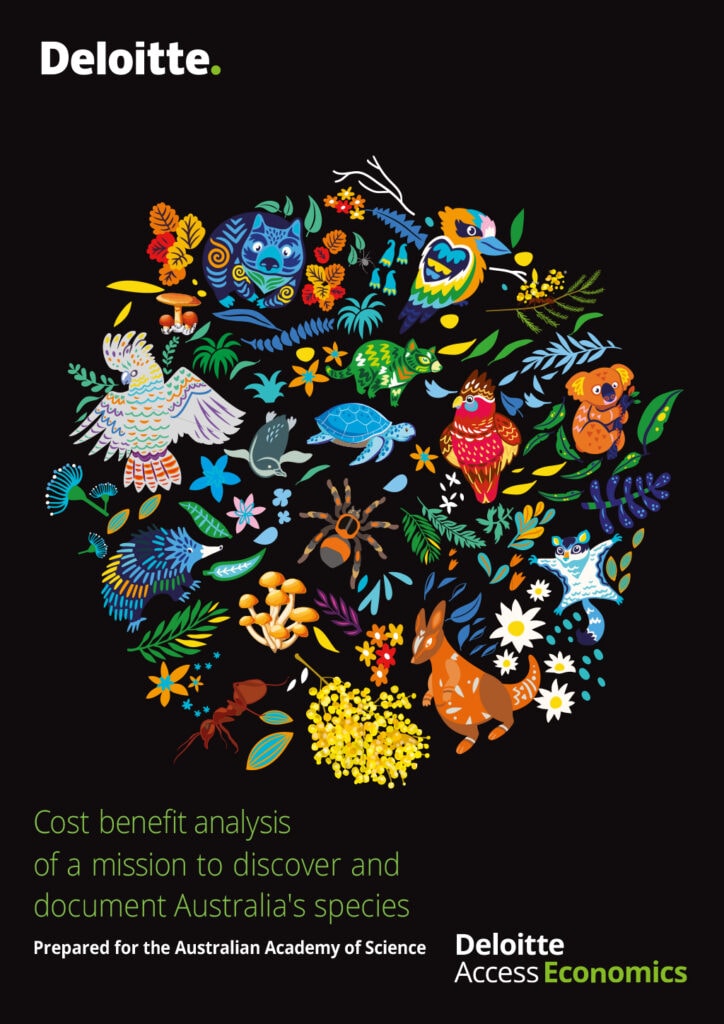A new report by Deloitte Access Economics has found that for every AU$1 invested in discovering remaining Australian species, there will be a return of up to AU$35 in economic benefit to the nation. The method of using a cost-benefit analysis to determine the value of discovering new species is novel. The report comes as scientists implement a plan to discover and document all species in Australia.
European explorers and international and Australian scientists have been documenting Australia’s species, using the environmental monitoring conventions and systems of Western taxonomy, for over 300 years. In that time, they have documented, classified, and given latinate names to a good number of them – no small feat given the diversity of Australian biomes and size of our continent and surrounding waters.
And more recently, respectful and increasing engagement between Western science and Indigenous knowledge systems, characterised by the latter’s deep knowledge of country and the species that live on country, has enriched both.
And yet, an estimated 70% of Australia’s species of animals, fungi, plants and other organisms have not yet been “discovered” – they are variously unnamed, undocumented, or unknown to science, and thus, invisible to government, industry and the community.
At the current rate, taxonomists estimate that it will take at least another four centuries to complete a first-pass documentation of Australia’s biodiversity. And many believe that this is too long.
Accelerating species discovery
In 2018 Taxonomy Australia, a program of the Australian Academy of Science, launched the decadal plan for taxonomy and biosystematics in Australia and New Zealand (2018-2027).
The first strategic action in the decadal plan articulates the biggest challenge in achieving the Academy’s mission, which is to significantly accelerate the discovery, naming and documentation of new species in Australia and New Zealand.
Documenting and naming species is important. A key first step for conserving and managing most species is to name and document them so that their unique physiological characteristics, distributions, conservation needs and ecology, that is, interactions with other species and their environment, can be determined. Having such knowledge about all species improves prediction and decision-making with respect to long term impacts of change on ecosystems, as occurs for example with development, periodic disturbance from extreme events and long-term climate shifts.
Documenting species is vital for industry and economic growth
Unknown species are important. Some will be crucial in ecosystems, helping ensure that our lands and oceans remain productive and healthy. Some may be important for agriculture as natural biological controls for pests and diseases or biosecurity as emerging pests or diseases. Others will be important resources for future industries and, if managed wisely, may drive future economic growth.
The Deloitte Access Economics study estimated the benefits of documenting all remaining species across four key sectors:
- Biosecurity: the benefits of reduced frequency of costly delays in identifying genuine and nongenuine threats range from AU$465 million to AU$660 million. Genuine threats are exotic invasive species incursions that threaten Australia’s biosecurity, native species and environment. Non-genuine threats are suspected detections that are later confirmed to pose no or low risk, for example native species lookalikes.
- Biodiscovery: the benefits of more cost-effective and strategic testing of samples for drug discovery amount to AU$123 million in the research phase of the pharmaceutical and medical biodiscovery process. Subsequent health benefits range from UA$3 billion to AU$27 billion.
- Agricultural R&D: the benefits of accelerated research into wild relatives of major commercial crops range from AU$49 million to AU$287 million.
- Biodiversity conservation: the benefits of improved conservation outcomes such as increased species resilience is estimated to be between AU$74 million and AU$372 million.
Across these four benefit streams, the analysis indicated a total benefit of between AU$3.7 billion and AU$28.9 billion over 25 years, for an estimated mission cost of AU$824 million. And while the costs of the mission are finite, the benefits will continue indefinitely.
Research infrastructure-enabled solutions
Clearly a large investment is required, but a combination of modern technologies such as high-throughput DNA-barcoding, genomic sequencing, artificial intelligence, super-computing—which all call upon National Research Infrastructure (NRI)—with a trained and committed workforce, could allow the task to be completed in a generation.
Some of this effort is already underway within TERN and its cognate NCRIS-funded NRI projects.
TERN monitoring at >800 sites across Australia has allowed the discovery and identification of new exotic species, prompting record rewrites and triggering more targeted monitoring and management. The discoveries demonstrate the value of TERN’s systematic monitoring, followed up with retention and formal identification of voucher specimens—as per the TERN AusPlots Rangelands Survey Protocols Manual.
Additionally, TERN contributed soil from its monitoring sites to the Biome of Australia Soil Environments (BASE) project coordinated through NCRIS-enabled Bioplatforms Australia (BPA). The outcome of the BASE project was a reference map of soil biodiversity for Australia. Valuable work continues in this area through the Australian Microbiome initiative, a continental-scale, collaborative project coordinated by BPA which aspires to characterise the diversity and ecosystem service provision of the microorganisms inhabiting natural Australian ecosystems.
It is initiatives like these that make leading scientists confident that Australia can meet this challenge.
“We have never before had the combination of very high urgency for the task of documenti
ng Australia’s species with the technologies that make it achievable and a highly strategic approach from the taxonomy sector to make it happen.
Only one more ingredient is needed – adequate support and investment from government, industry, the philanthropic sector and the community”
Adjunct Associate Professor Kevin Thiele, Australian Academy of Science’s Director of Taxonomy Australia.









